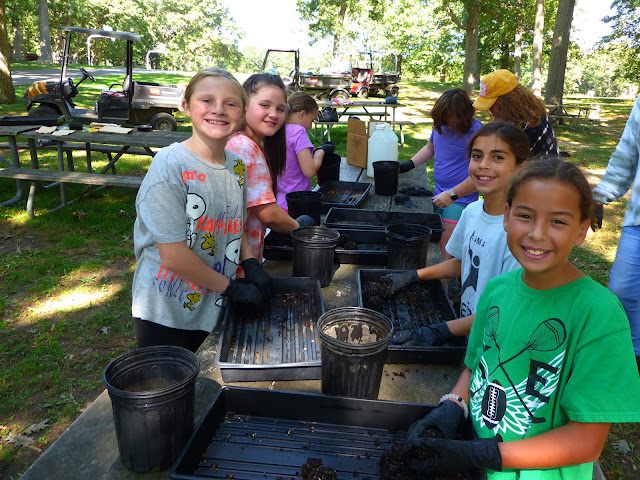The Girl Scouts are Bethpage State Park's "Busy Bees" this Fall Season

Did you know that fall is the season for seed collecting? Did you know that between our multiple planted gardens and wildflowers, Bethpage State Park is nothing short of a seed bank!? In fact, our staff spends a significant amount of time in September and October collecting seeds from favorited pollinator plants, with the goal of propagating new plants for the following season. That's right, it is never too soon to be thinking about creating a habitat for next year's pollinators! This year we wanted to share our plant knowledge with the local community by inviting two Girl Scout troops down to our Picnic area to partake in a fun seed activity! The project - SEED BOMBS! Seed bombs are an easy and creative way to promote seed dispersal. All you need is soil, compost, clay and your choice of seeds. Fun fact: Since we are a park with golf course materials, we actually used wet hydroseeding mulch instead of clay. It worked just as well to bond the materials together. ...




